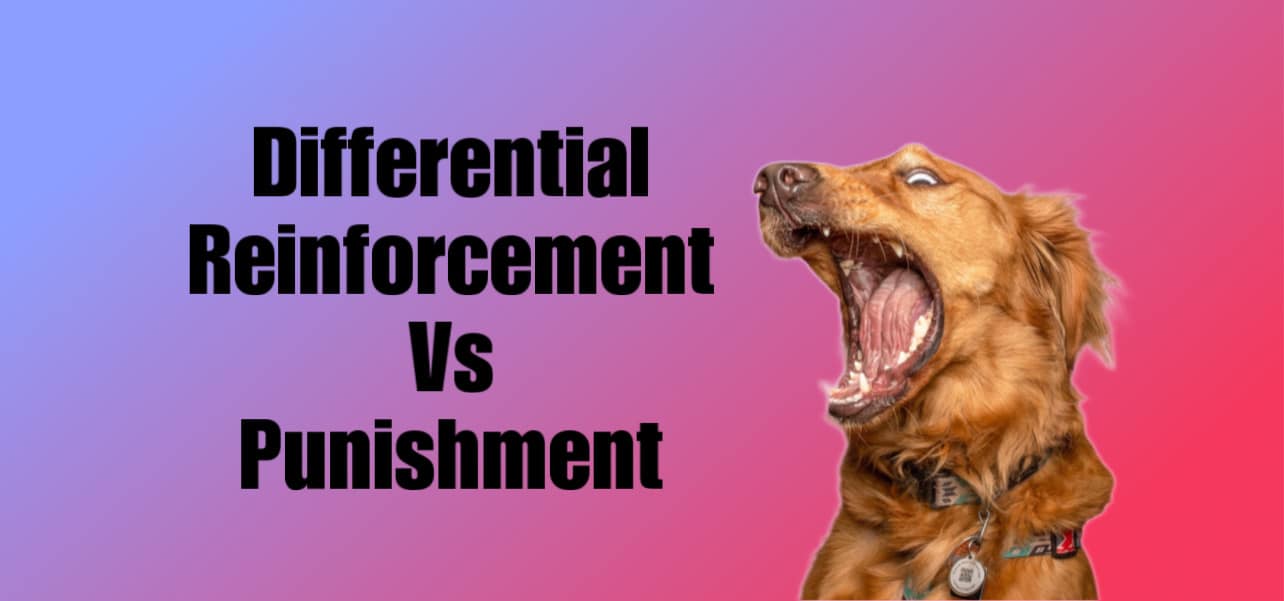behavior modification, Differential Reinforcement, dog training, Evidenced-Based Training, Pet Care and Wellness, positive reinforcement, Uncategorized
Debunking Myths About Positive Reinforcement in Dog Training: A Comprehensive Guide
Posted on by Dog Behaviorist
Debunking Myths: Understanding Positive Reinforcement and Differential Reinforcement
Myth 1: Positive Reinforcement Trainers Don’t Say ‘No’
Why It Persists
The cultural myth of the stern, dominant dog trainer has been deeply ingrained through media and outdated training manuals.Reality
The truth is that saying ‘no’ is not inherently ruled out in positive reinforcement. Rather, the focus is on guiding the dog towards the behaviors we wish to see, essentially saying “yes” to alternatives.Myth 2: Positive Reinforcement Encourages Ignoring Bad Behavior
Why It Persists
This myth might arise from a misunderstanding of the term “extinction,” which in psychology refers to the reduction of a behavior by not reinforcing it.Reality
In practice, undesirable behaviors are not ignored; they’re replaced through techniques like differential reinforcement, which we will explore in depth later.Myth 3: Dogs Trained with Positive Reinforcement Are Spoiled and Unruly
Why It Persists
This myth likely comes from equating kindness and reward-based methods with a lack of structure and rules.Reality
Being reward-based doesn’t mean lacking rules; it simply means teaching those rules in a dog-friendly way.The Ethical Imperative: Why Punishment Isn’t Just Ineffective, but Unfair
When a dog enters a human household, they come without an understanding of human rules and social norms. They rely on us for that education. Therefore, using punitive measures for ‘breaking the rules’ is akin to punishing a foreign student for not knowing the native language. This is not just scientifically flawed; it’s ethically unfair. Furthermore, studies indicate that punishment-based methods can lead to increased instances of aggression and stress-related behaviors in dogs (Herron, M. E., Shofer, F. S., & Reisner, I. R., 2009).The Science ofDifferential Reinforcement
Differential reinforcement goes a step further than simple positive reinforcement. Here, not only is the desirable behavior rewarded, but alternative behaviors are systematically reinforced to replace the undesirable ones. For example, if a dog is prone to digging in the yard, you could use Differential Reinforcement of Incompatible Behavior (DRI) to encourage the dog to play with a specific toy instead, rewarding the alternative action.Subtypes of Differential Reinforcement
DRI (Differential Reinforcement of Incompatible Behaviors): Reinforcing a behavior incompatible with the undesired one. DRO (Differential Reinforcement of Other Behaviors): Reinforcing any other behavior that is not the undesired one. DRA (Differential Reinforcement of Alternative Behaviors): Reinforcing a specific alternative to the undesired behavior.Advanced Approaches: Counterconditioning and Desensitization
For severe behavioral issues like aggression or reactivity, more intensive techniques such as desensitization and counterconditioning and may be employed. Counterconditioning aims to change the dog’s emotional response toward a problematic stimulus. Desensitization is the gradual exposure to the said stimulus until it ceases to elicit an extreme reaction (O’Heare, J., “The Science of Dog Behavior,” 2009). Conclusion The myths surrounding positive reinforcement don’t hold up under scrutiny. Armed with scientific support and ethical considerations, it becomes clear that positive reinforcement and its advanced forms are not just effective, but also the right thing to do. As we debunk myths, we pave the way for healthier, happier relationships between dogs and their human companions. References Skinner, B.F. (1953). “Science and Human Behavior” Herron, M. E., Shofer, F. S., & Reisner, I. R. (2009). “Survey of the use and outcome of confrontational and non-confrontational training methods in client-owned dogs showing undesired behaviors” O’Heare, J. (2009). “The Science of Dog Behavior”
Facebook
Twitter
LinkedIn

